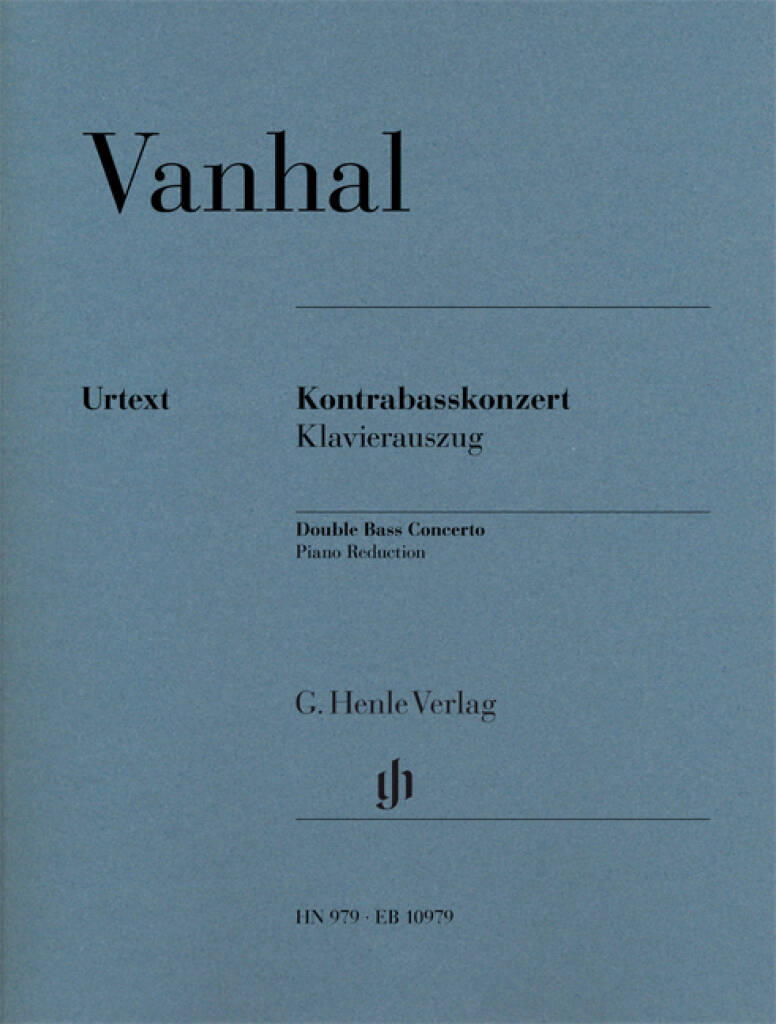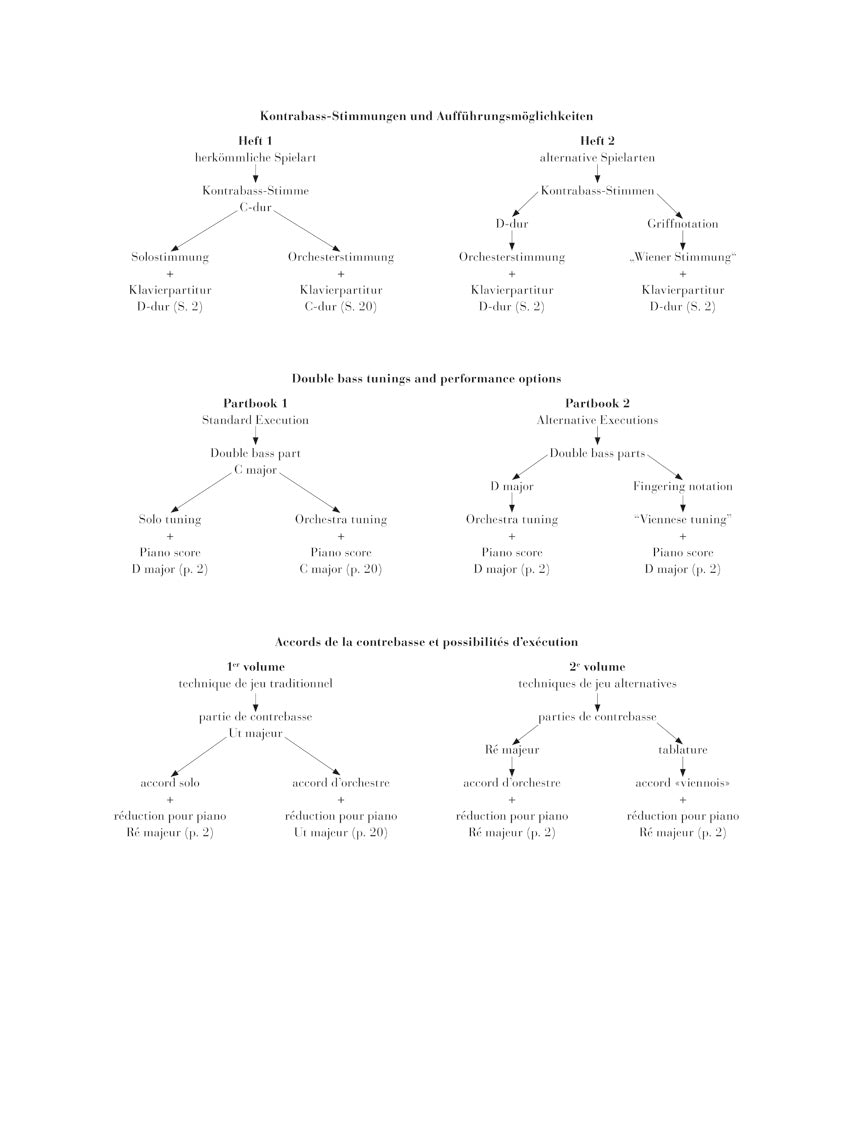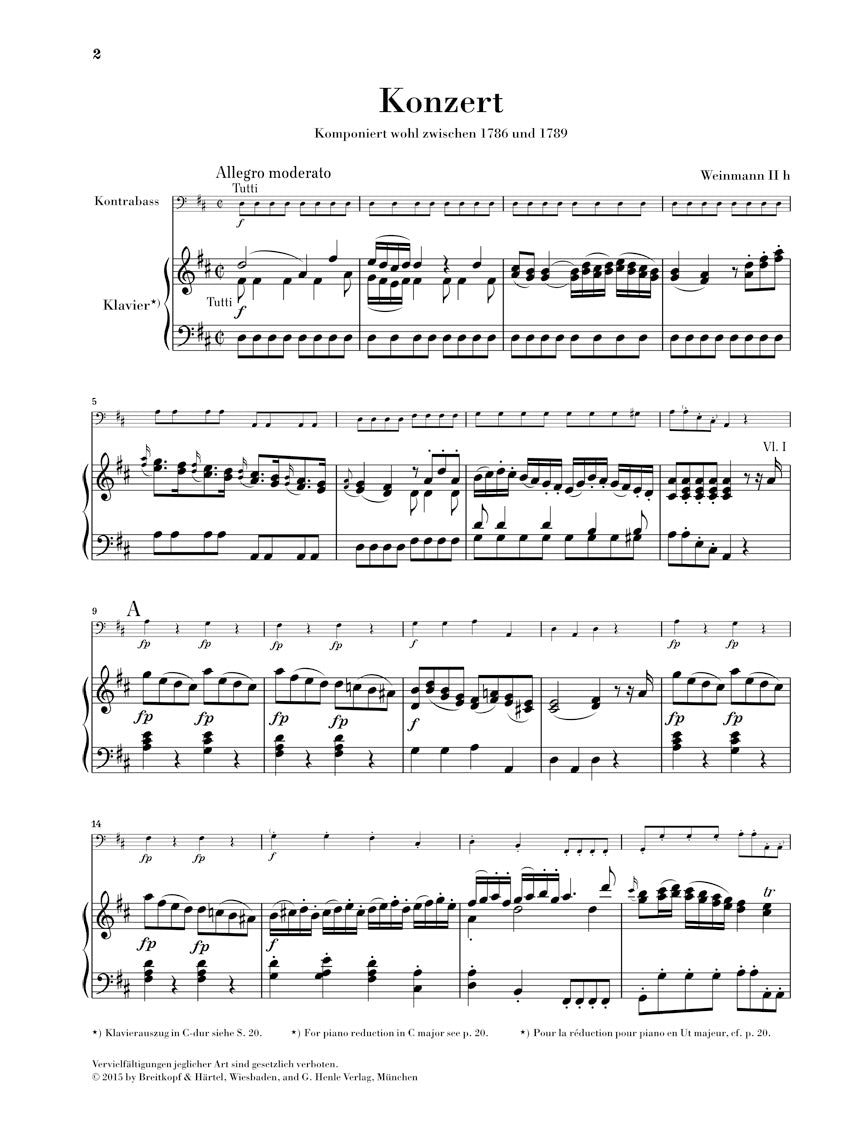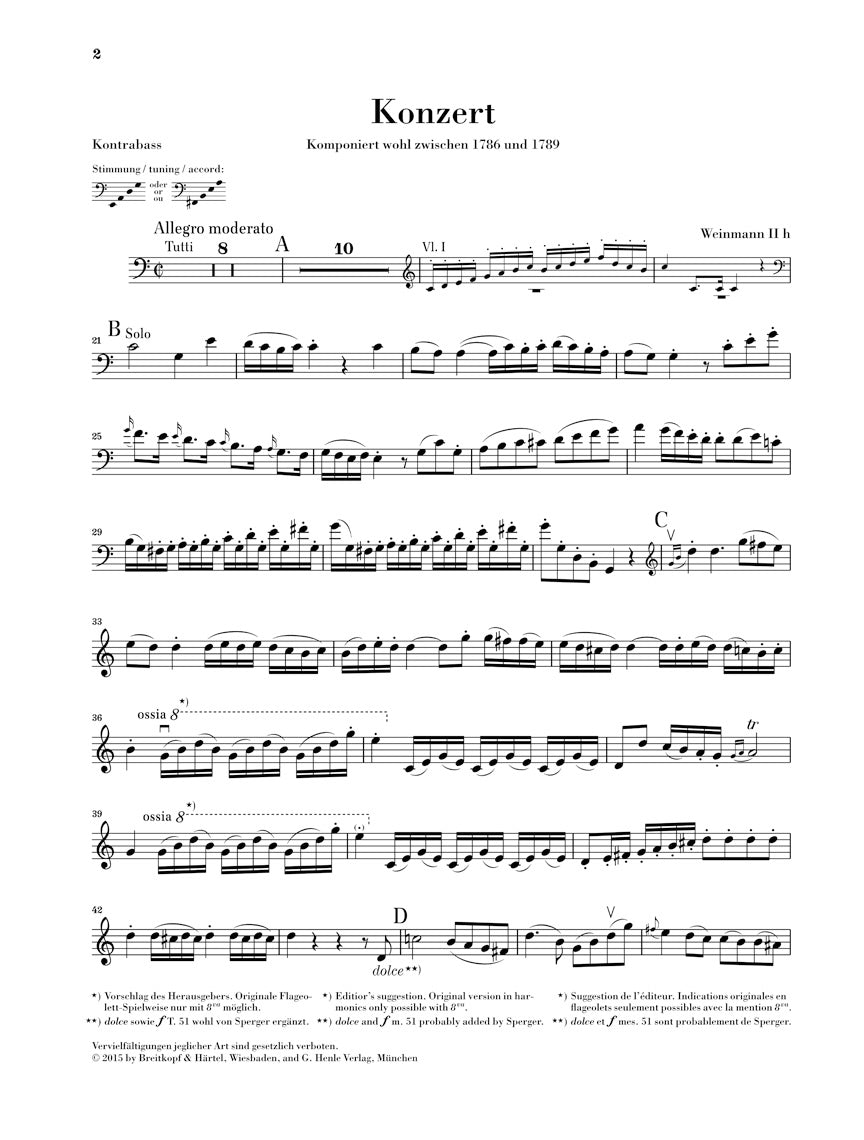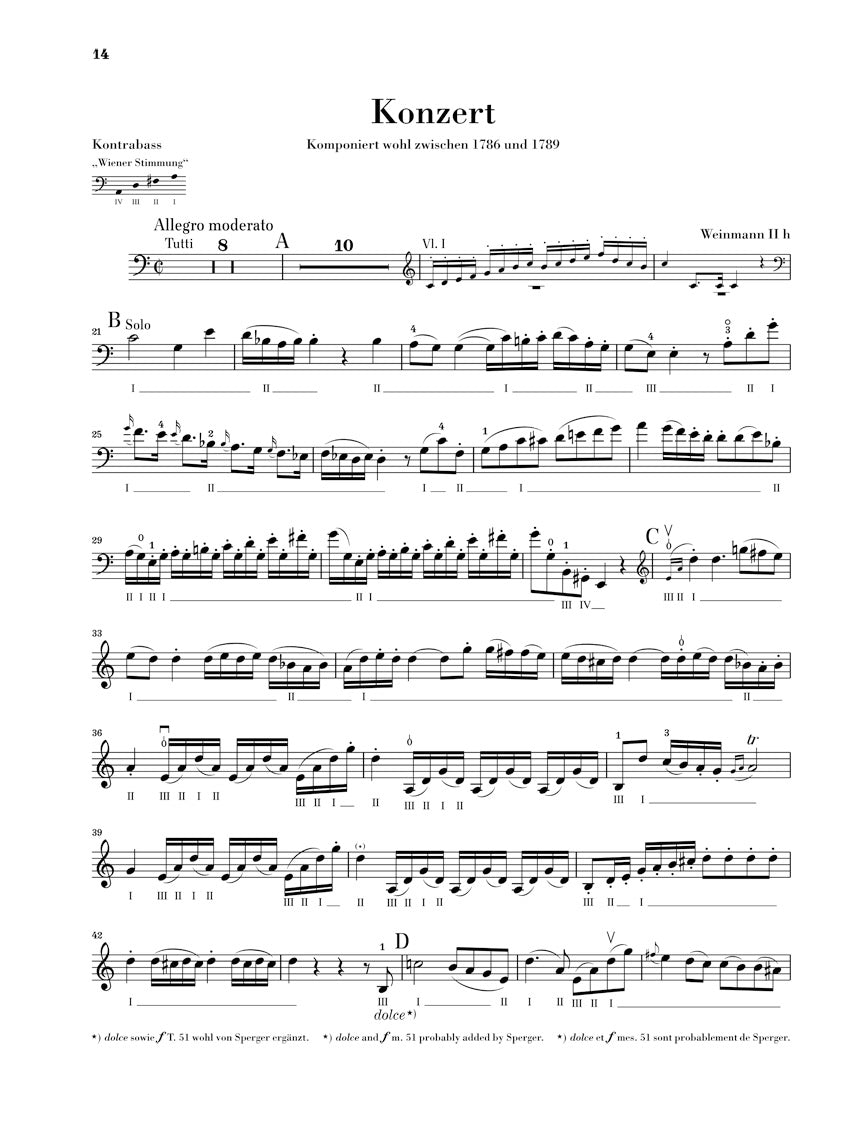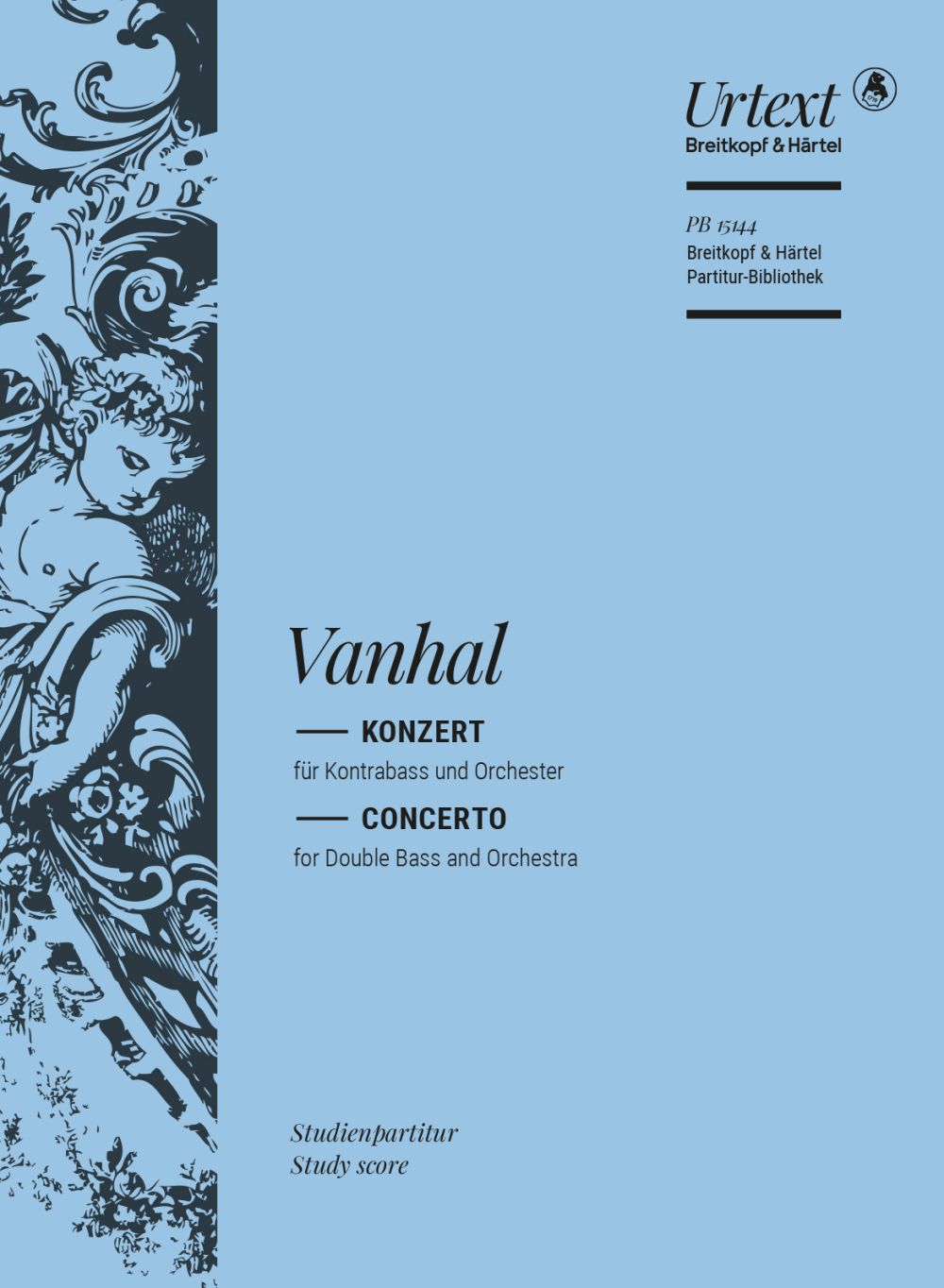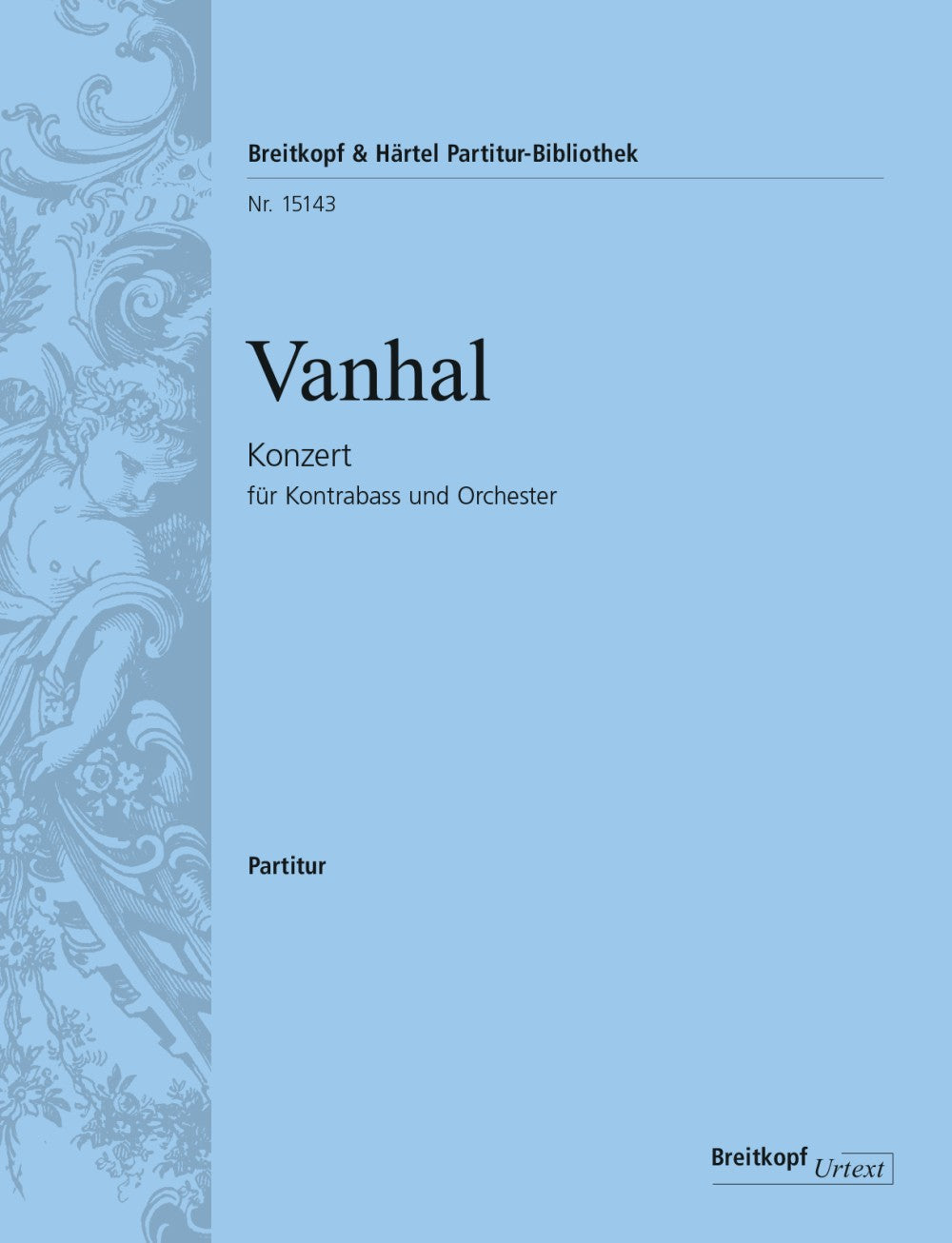Vaňhal: Double Bass Concerto
In stock and typically ships within 1 business day.
We are offering this G. Henle piano reduction in order to complete the performance material to this work of which Breitkopf publishes full score and orchestral parts in collaboration with G. Henle.
- Composer: Johann Baptist Vaňhal (1739-1813)
- Editor: Tobias Glöckler
- Piano reduction: Christoph Sobanski
- Fingering: Tobias Glöckler
- Cadenzas: Tobias Glöckler
- Instrumentation (this edition): Piano Reduction, Double Bass
- Originally for: Double Bass, Orchestra
- Work: Bass Concerto
- ISMN:
- Size: 9.3 x 12.2 inches
- Pages: 84
- Urtext / Critical Edition
Description
Following Dittersdorf and Hoffmeister, Johann Baptist Vaňhal and his sole double-bass concerto add a further highlight to the classical bass literature in our catalogue. The virtuoso work was transmitted only in a copy of a part owned by the famous double-bass player Johannes Sperger and found in his estate, which raises a few questions on account of the many later additions in the solo part (especially concerning the octave transpositions).
In Henle's Urtext edition, Tobias Glöckler proposes a solution to this dilemma with a musical text that is outstandingly well-prepared for the performing artist. The piano reduction is printed in two keys (C and D major), which allows for performances in the solo and orchestral tuning or, at will. Moreover an additional part, written in fingering notation, has been specially designed for use with the "Viennese tuning" customary in Vaňhal's days. It allows players to use this resonant historical tuning immediately without tedious retraining.
Publishers use a lot of words to describe what they sell, and we know it can be confusing. We've tried to be as clear as possible to make sure you get exactly what you are looking for. Below are descriptions of the terms that we use to describe the various formats that music often comes in.
Choral Score
A score for vocalists that only contains the vocal lines. The instrumental parts are not there for reference. Generally, cheaper than a vocal score and requires multiple copies for purchase.
Facsimile
Reproductions of the original hand-written scores from the composer.
Full Score
For ensemble music, this indicates that the edition contains all parts on a single system (there are not separate parts for each player). In larger ensembles, this is for the conductor.
Hardcover
Hardbound. Generally either linen-covered or half-leather.
Orchestral Parts
Similar to a wind set, this is a collection of parts. In the case of strings, the numbers listed are the number of copies included, though generally these are available individually (often with minimum quantities required).
Paperback
When publishers offer multiple bindings (e.g. hardcover) or study scores, this is the "standard" version. If you're planning to play the music, this is probably what you want.
Performance / Playing Score
A score of the music containing all parts on one system, intended for players to share. There are not separate parts for each player.
Set of Parts
For ensemble music, this indicates that there are separate individual parts for each player.
Solo Part with Piano Reduction
For solo pieces with orchestra, this is a version that contains a piano reduction of the orchestra parts. For piano pieces, two copies are typically needed for performance.
Study Score
A small (think choral size) copy of the complete score meant for studying, and not playing. They make great add-ons when learning concertos and small chamber works.
Vocal Score
A score prepared for vocalists that includes the piano/organ part or a reduction of the instrumental parts.
Wind Set
For orchestral music, this is a collection of wind and percussion parts. The specific quantities of each instrument are notated.
With Audio
In addition to the printed music, the edition contains recordings of the pieces. This may be an included CD, or access to files on the internet.
With / Without Fingering (Markings)
Some publishers prepare two copies - a pure Urtext edition that includes no fingering (or bowing) suggestions and a lightly edited version that includes a minimal number of editorial markings.

